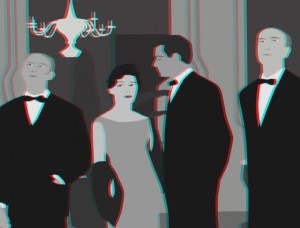New Video Art Show Opens at the American Art Museum
/https://tf-cmsv2-smithsonianmag-media.s3.amazonaws.com/filer/20110520110649paik_c.jpg)
Movies are a major part of our popular culture and are like visual comfort food. You watch them eating popcorn in a comfortable chair and enjoy the show. Video art on the other hand can be an intellectually harder pill to swallow. You find video art in an art museum where the benches are uncomfortable and snarfing fistfuls of Goobers is usually frowned upon. But Watch This, a new show at the American Art Museum, offers visitors a welcoming introduction to the world of video art.
"The moving image is the great development of the 20th century," says John G. Hanhardt, a contributing curator of film and media working with the American Art Museum, and a pioneer in art media. "With the development of video, artists could take it into their studios. It's the new paper. It's the new printing press. Now you're making projections. It's the new technology." And much of the fun is to see how much the nine pieces on display in the new exhibit chart the progression of video technology across the decades, from the days of tube televisions and VHS tape to much more modern digital gadgetry. "Just like a painter might build up a canvas and create their own materials, these artists are creating new technologies to make new visual forms," says Hanhardt.
On one end of the spectrum, you have the piece 9/23/69: Experiment with David Atwood by Nam June Paik. Presented on a vintage RCA television set, it features a series of layered, undulating images in a funky palette of colors. The moving photo collage was a strange sight, yet not unfamiliar. Watching them, I had to suppress my natural instincts to fuss with the tracking and horizontal control knobs that I had on my old TV. But letting the urge go, I was able to enjoy the distorted images for their own, surreal beauty. I also took pause to consider that this piece was made at the dawn of the video art age. Today, any aspiring video enthusiast has tools like iMovie to play with, but Paik had to work with with electronics engineer Shuya Abe to build a video synthesizer to achieve these images.
And then there's the work cryptically entitled, LYAM 3D by the Japanese-German artist Kota Ezawa. Here, the artist takes scenes from the 1961 film Last Year at Marienbad and digitally traces over them, creating comic-book style graphics that look like paper cutouts and are distinctly 2D. But once you put on the pair of blue and red lenses that the museum provides, the images suddenly leap off the screen like a pop-up book large enough to step into. A post-museum Wikipedia search revealed to me that Last Year at Marienbad is noted for its surreal, avant garde cinematography that plays with your concept of spatial relationships and I began to understand why Ezawa decided to play with 2D and 3D imagery in his homage. The strangely flat-yet-dimensional environments he creates in LYAM 3D evoke people and place you might see in real life, but the compositions are so static—the characters remain motionless while the only movement is provided by a panning camera—that the piece has a dreamlike quality to it. Marienbad is also one of those films that some absolutely love while others find it completely incomprehensible. Sometimes, isn't it enough to just be pretty?
For the uninitiated like me, the curator offered a tip. "People should be relaxed and be open to seeing something new," Handardt says. "We've tried to make a gallery that tries to invite the viewer and get them to have new visual experiences." With nine pieces on display, it's a great way to dip your feet into the pool and test the waters. In short: come on in and just have fun.
Watch This is open indefinitely at the American Art Museum. Some pieces will be periodically swapped out, so be sure to check back.
